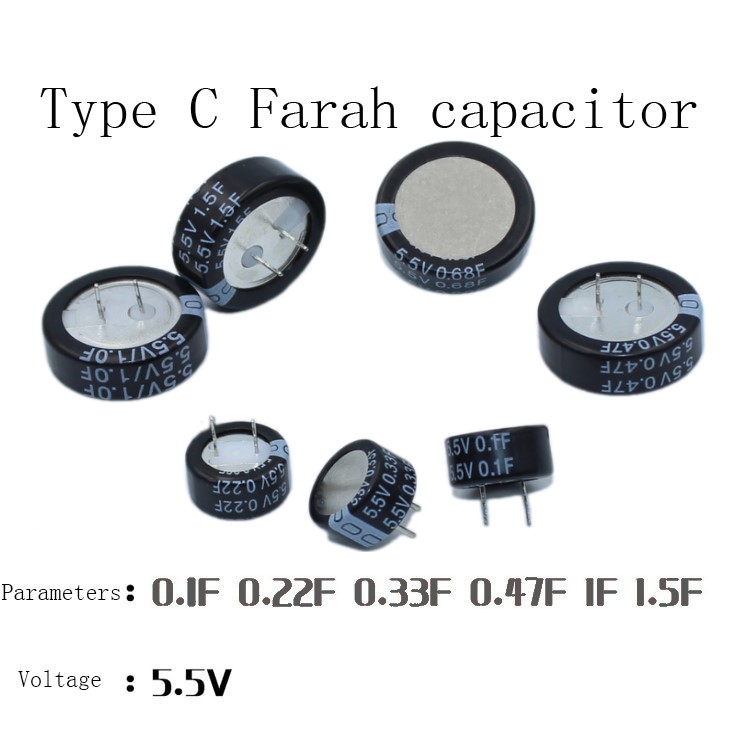Consulting phone:
135-3037-2041
(Mr.Wang)
Lithium ion supercapacitors take into account the excellent voltage resistance characteristics of electrolytic capacitors, and combine the anode of tantalum electrolytic capacitors and the cathode of electrochemical capacitors with appropriate electrolyte solutions to form a special structure that combines the high voltage resistance of electrolytic capacitors with the high capacity and energy storage density of electrochemical capacitors

The anode will be replaced by the anode of a tantalum electrolytic capacitor, while the cathode will still use the electrode of an electrochemical capacitor because the specific capacitance of the cathode material is very large, which can be considered as the total capacitance of a supercapacitor compared to the anode and capacitance. The total electrical capacity of the lithium-ion supercapacitor is mainly determined by the size of the anode capacitance. Another reason is that the cathode material has a large specific capacitance, which can be made very thin to minimize its occupied space. The remaining effective space can be used to expand the anode. Therefore, as long as the capacitance of the anode is increased as much as possible within the effective space, the energy storage density per unit volume of lithium supercapacitor can be increased
A hybrid supercapacitor is a new energy storage system that combines the high energy density of lithium-ion batteries with the high power density, excellent cycle life, and excellent fast charging performance of capacitors. It includes a capacitor electrode, a lithium-ion battery electrode, an organic lithium salt electrolyte, and a separator. The hybrid supercapacitor combines the high specific capacity of lithium-ion batteries and the wide voltage window of organic electrolytes to enhance its energy density. However, its fast charging performance has decreased due to the insertion and removal reactions of lithium-ion battery electrodes, but it still has a fast charging performance that occurs every few minutes. At present, there are two configurations of hybrid supercapacitors. One uses lithium-ion battery positive electrode materials (such as lithium cobalt oxide, lithium iron phosphate, ternary, etc.) as the positive electrode, and large specific surface area activated carbon or mesoporous carbon as the negative electrode; Another type uses lithium-ion battery negative electrode materials as the negative electrode, with activated carbon or mesoporous carbon with a large specific surface area as the positive electrode. A hybrid supercapacitor is introduced, which uses high specific surface area activated carbon or mesoporous carbon as the positive electrode or a compound doped with one or more metal elements as the negative electrode; Another type of hybrid supercapacitor uses a mixture of lithium iron phosphate and graphite as the positive electrode, and a mixture of graphite and activated carbon as the negative electrode. However, using lithium titanate and metal oxides as negative electrode active materials for hybrid supercapacitors has the disadvantages of complex production processes, serious environmental pollution, and high production costs; Using graphite materials as the negative electrode material for hybrid supercapacitors, although its preparation cost is low and the stock is large, its lower theoretical capacity limits the improvement of energy density in hybrid supercapacitors. Moreover, commonly used lithium-ion battery electrodes and capacitor electrodes have the disadvantage of limited active sites and low capacity. In addition, both types of supercapacitors mentioned above involve steps such as mixing, coating, and rolling of positive and negative active substances during the preparation process, which is cumbersome and requires a large amount of manpower and equipment investment. In view of this, the present invention is proposed. The technical implementation aims to provide a metal, alloy, or metal composite material that can be used as both a negative electrode active material and a negative electrode current collector in lithium-ion hybrid supercapacitors, which can be alloyed with lithium ions in the electrolyte. The above-mentioned metals, alloys, or metal composite materials can greatly reduce the self weight of lithium-ion hybrid supercapacitors by simultaneously serving as negative electrode active materials and negative electrode current collectors, further improving the energy density and theoretical specific capacity of lithium-ion hybrid supercapacitors, simplifying the production process of capacitors, reducing production costs, and being more environmentally friendly. The second objective of the present invention is to provide a lithium-ion hybrid supercapacitor, wherein the negative electrode of the lithium-ion hybrid supercapacitor is a metal, alloy, or metal composite material that can be alloyed with lithium ions in the electrolyte. The metal, alloy, or metal composite material plays a dual role as the negative electrode active material and negative electrode current collector, greatly reducing the self weight of the capacitor, Further improve the energy density and theoretical specific capacity of capacitors, simplify the production process of capacitors, reduce production costs, and be more environmentally friendly.
